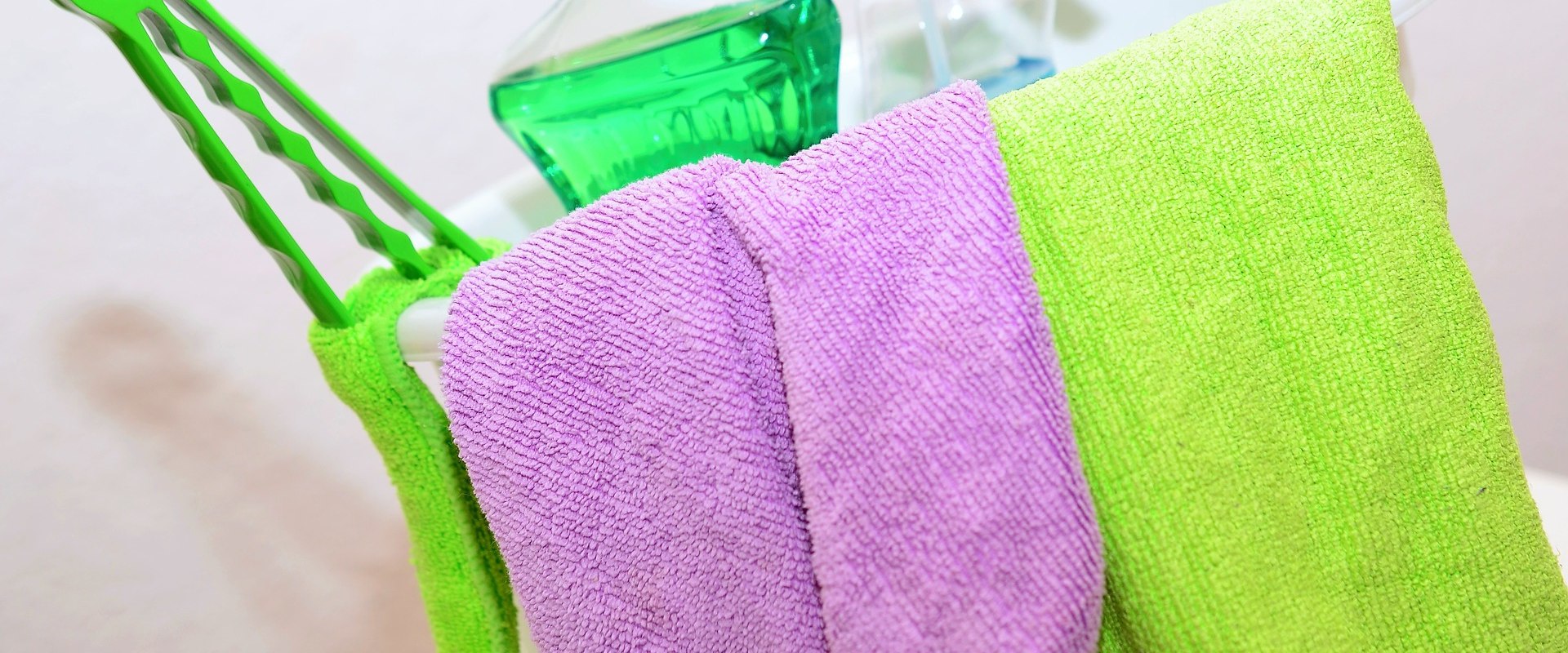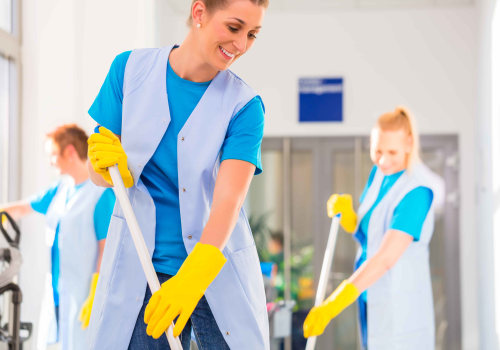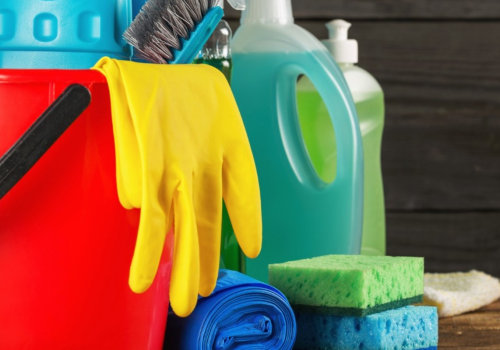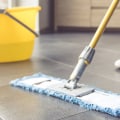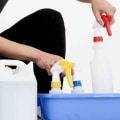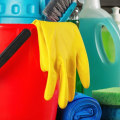COVID-19 resources are now included with training for food handlers Detergents are the most common type of cleaning agent and are used in domestic and commercial kitchens. They work by breaking dirt or dirt, making them easy to wash. Detergents used in commercial kitchens are usually synthetic detergents made from petroleum products and can be in the form of powder, liquid, gel, or crystals. Degreasers are sometimes referred to as solvent cleaners and are used to remove grease from surfaces such as oven countertops, counters, and grill splashes.
Methylated spirits or white spirit were commonly used as degreasers in the past. Most food companies are now trying to use non-toxic, smokeless degreasers in their operations to avoid chemical contamination. Abrasives are substances or chemicals that rely on the action of scrubbing or scrubbing to clean dirt from hard surfaces. In commercial kitchens, abrasives are generally used to clean floors, pots and pans.
Abrasives should be used with care, as they can scratch certain types of materials used in kitchen equipment, such as plastic or stainless steel. Canadian Food Safety Institute 77 Bloor St West, Suite 600 Toronto, Ontario, M5S 1M2, Canada. Detergents are the most common type of cleaning agent and are used in domestic and commercial kitchens. They are of two basic types: spirit-based, water-based.
Alcohol-based brighteners contain a mixture of mainly natural waxes, dispersed in an alcohol solvent. They may be in paste or liquid form and contain silicon, but too high a silicon content makes the floor slippery. Glaze buildup can be removed by losing the wax finish with alcohol and a slight abrasion, and then picking up the loose wax with a damp mop. It is suitable for floors that are damaged by water such as wood, cork, linoleum and magnesite.
Water-based brighteners are emulsions in which fine particles of natural and synthetic waxes are dispersed in water. They are suitable for use on thermoplastic, rubber, PVC, asphalt and combination floors, as alcoholic beverages can affect them. They can also be used on sealed floors made of wood, cork, magnesite and linoleum. Water-based polishes are always liquid, but can be fully polishable, semi-polishable, or dry shine.
The accumulator polish can be removed by loosening the wax, synthetic resin with hot water and alkali, without detergent. What toxic chemicals do you buy for a particular cleaning job? The answer isn't easy, unless you know what ingredients are in commercial products. Common ingredients in household cleaning products include alkalis, acids, detergents, abrasives, disinfectants, and spirit solvents. Abrasives are materials that wear away dirt when scrubbing.
Rotten stone, whiting, pumice, volcanic ash, quartz, marble, feldspar and silica are excellent examples of an abrasive. Sandpaper, plastic and nylon meshes, and steel wool are also abrasive. Coarse-grated abrasives appear rough and gritty. Labels on abrasive powder packages rarely use the term “abrasive,” but instead claim to be “cleaners,” as opposed to the more common term “cleaner.”.
Regular use of aggressive abrasives on a surface will gradually scratch the finish of sinks, bathtubs, and kitchen appliances. Once the surface is dull and rough, it becomes more deeply soiled and stained, and you need to continue using a strong abrasive to remove embedded dirt and stains. Coarse-grained abrasives can damage plastic, glass, non-stick cookware surfaces, painted wood, and highly polished and plated metals. Acids are beneficial for removing hard water deposits, discoloration from aluminum, brass, bronze and copper stains, and iron oxide.
Strong acids also corrode clothing, leather, leather, and some metals. They can also irritate and injure the skin and eyes. Alkalis are soluble salts that are effective in removing dirt without excessive rubbing. They are good grease removers because alkalis form an emulsion, a mixture in which oily or solid particles are kept in suspension.
The particles do not separate from the rest of the liquid; therefore, they do not deposit again on the surface being cleaned. Alkaline cleaners can also remove oil from an oil-based paint, dry it, and cause it to crack or peel. Alkali tends to darken aluminum surfaces. Most are toxic, some corrosive, others can irritate skin and eyes.
Stronger alkalis can cause burns and, if ingested, can cause internal injury or death. Chlorine is generally the most commonly used bleach in household cleaning products. However, new non-chlorine bleaches are becoming increasingly popular, mainly because they are safer to use and store. Some laundry detergents can be used for household cleaning work.
Detergents loosen dirt and, if complex soluble phosphates (called “builders”) are added to a detergent, they will remove oily dirt. If a cleaning agent is added, the cleaning product is marked as “heavy duty” or “all-purpose”. Disinfectants are chemicals that reduce the amount of bacteria and are often used to clean bathrooms and wash dishes. Use with caution and follow bottle instructions.
Disinfectants also help deodorize surfaces because they kill odor-producing microorganisms. This is the most common type of cleaning agent, which you must have seen several times, used in the kitchen in different forms. They come in liquid, powder, gel, or even crystal form for use in different things. They are good at removing dirt and grime by washing it with its petroleum products inside.
Detergents come in all their forms because they are used in many different places, such as a liquid detergent to remove stains, a powder detergent to remove dry stains, and many other things. As the name suggests, degreasers are used to remove stubborn grease stains found mainly on countertops, ovens, microwaves and grill splashes. They're packed with methyl alcohol, also known as white spirit, that cuts through fat. There are different types of innovations introduced to solvent cleaners, including smokeless, non-toxic chemical pollution to keep the environment chemical-free while continuing to do your own work.
This is not a very common kitchen cleaning agent, probably because they tend to leave scratches on plastics and stainless steel. They are usually used to remove dirt from hard kitchen surfaces, which are mainly found on floors. In some commercial kitchens, abrasives are also used in pots and pans, but they must be handled with great care due to their staining nature. For effective cleaning, make sure you use the correct cleaning agent for the type of item you are cleaning, the cleaning method you are going to use, and the type of dirt on the item.
To keep the house clean and away from diseases and insects, there is a need for such agents that ensure that things are deeply clean. Different cleaning chemicals are used depending on the item to be cleaned, the cleaning method, and the type of dirt found on the item. Now that you have all this information about cleaning products, you can choose the one that best suits your individual needs and cleaning preferences. For special types of precious metals, especially those used for luxury watches and high-end jewelry, special cleaning agents are generally used to clean and protect them from the elements.
Examples of these cleaners include Weiman jewelry cleaner, HOROCD & watch cleaning solution, even Holland Hallmark metal plate cleaning. We explain the science behind some of the most popular cleaning methods and tools, so you can clean smarter and not harder. There are different cleaning agents that are used in different ways to clean different surfaces working their magic. .
.
